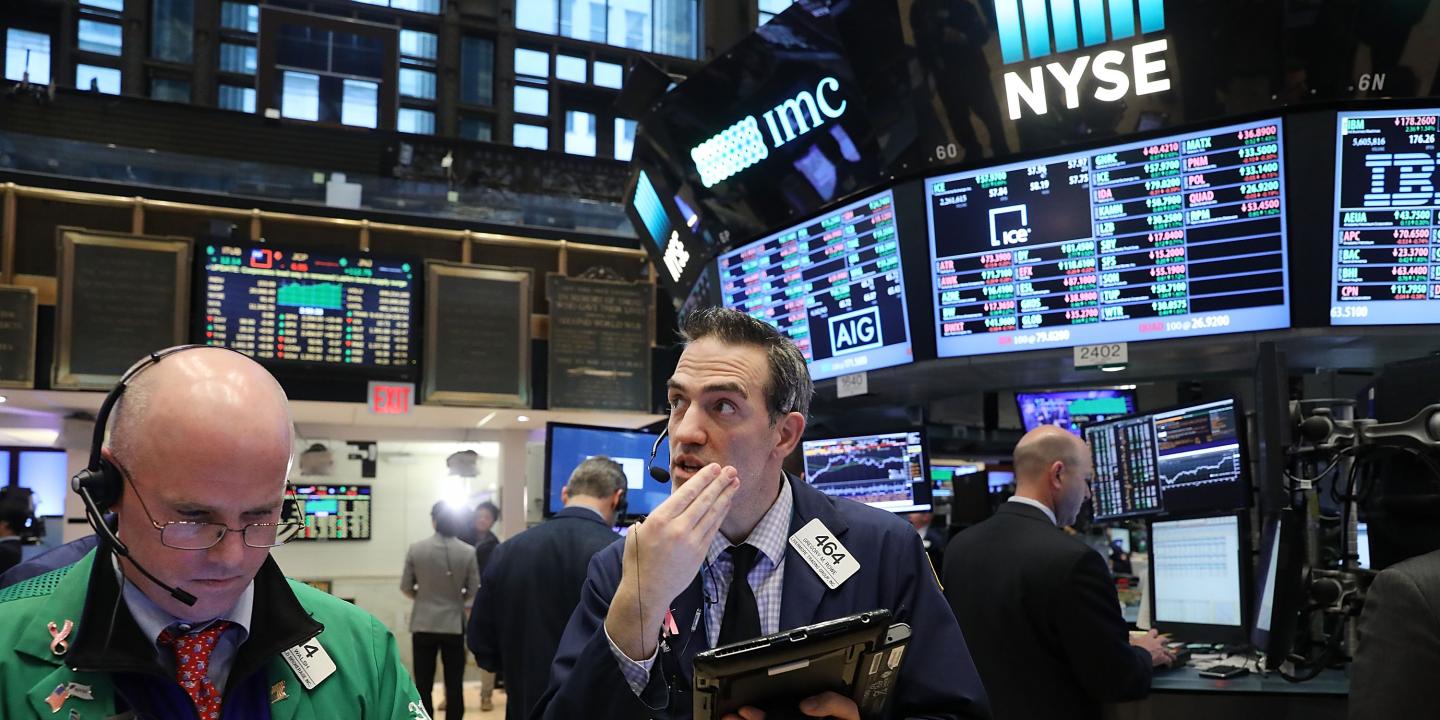Investors bailed out of US stocks at a near-record pace in the last week, as money flowing into treasury bills surged to a 10-year high.
Outflows from US stock funds and ETFs totaled $24.2 billion, the third-highest ever, and the $30 billion that came out of global stock funds in total in the past week was the second-highest ever and largest since the financial crisis, according to Bank of America Merrill Lynch strategists, CNBC reported.
The outflows from US stocks were the highest since the stock market correction in February. Bonds, at the same time, saw small inflows of $700 million.
"That nervousness, the losses people were experiencing in non-US markets with the trade wars has probably led to what you're seeing in the markets in the last week or so—a big unwind of positioning, a flight to quality," said Michael Hartnett, BofAML chief investment strategist.
Hartnett said there was a "pervasive euphoria" about the US at the beginning of the year and that has faded. Now, investors are adjusting positions, not panicking, though T-bills, considered the safest of safe haven bets, continued to pull in funds at a rapid pace.
"It's not like it's February 2016. It's not like we're staring recession in the face, and everyone is cashed up to the eyeballs and policymakers are panicking. That's not what's happening. It's just that people were pricing in Goldilocks forever earlier on in the year, and that was wrong. They're probably unwinding that positioning," he said. "It helps explain why the markets have firmed up in the last couple of days. You want to buy fear and sell greed."
Market Could Get Rockier
Hartnett said July could be a month where investors sell volatility, but then the market could get rockier in August and September, ahead of the midterm elections.
"To get a big selloff from here, you're going to need negative developments. The new negative developments could be tariffs on European autos or tariffs on US tech. They could be Chinese currency issues resurfacing," he said. He said the S&P 500 could rally a little but it's not likely to break out of its range, for now.
Hartnett and BofAML strategists, who released the data, said there are some conditions that seem very similar to 1998 when there was a late-cycle global credit event that started in emerging markets. They point to the forced deleveraging and collapse in markets from the Asian currency crisis and collapse of Long Term Capital Management. Between July and October 1998, the S&P 500 fell 22% and Nasdaq fell 33%. Banks fell 43% in that period.
Emerging market debt fund in the last week saw its 10th outflow in a row as $3.2 billion exited. Emerging market equities lost $3.1 billion, the seventh week of outflows in eight.
Market events in 2018 include federal reserve tightening, the US decoupling from other economies, collapsing emerging markets and outperforming levered quant funds.
The strategists say watch the "summer pain trade" in oil, banks and the yield curve.
Wall Street Ekes Out Gain
Wall Street's major stock indexes edged higher on Friday, as a surge in Nike Inc shares helped the quarter close out on an upswing while concerns over US international trade relations ebbed, Reuters reported.
For the quarter, the Dow, the S&P 500 and the Nasdaq all posted gains. The Dow edged up 0.7%, the S&P 500 rose 2.94%, and the tech-heavy Nasdaq jumped 6.33%. The small-cap Russell 2000, whose components are more domestically focused than their large-cap counterparts, climbed 7.4%.
Like the Russell, the S&P's major sectors reflected some skittishness over trade. Energy had the biggest percentage gains for the quarter as oil prices jumped, and growth sectors such as technology and consumer discretionary stocks had solid gains. But real estate and utilities, considered defensive sectors, also advanced.
On Friday, shares of Nike soared 13% to hit an all-time high of $81 after the world's largest footwear maker reported a return to growth in North America in the last quarter and gave an upbeat forecast for the year.
Nike shares ended the day up 11.1% to $79.68, their biggest one-day gain in nearly four years. Nike was the top boost to the Dow and the S&P 500.
The S&P 500 bank sector index ended the day barely changed after earlier touching a one-week high.


